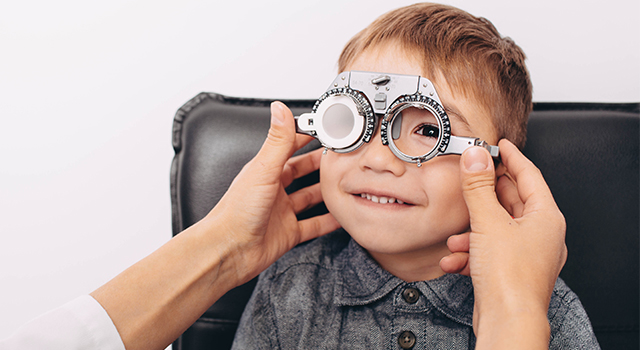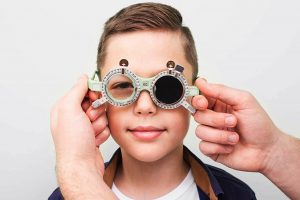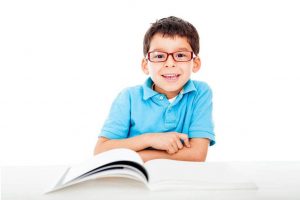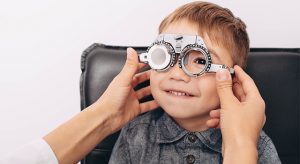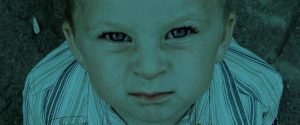What is a cycloplegic refraction and why is it important?
Many eye doctors recommend a cycloplegic refraction to enable early detection of potential vision problems and an accurate optical lens prescription.
The standard refraction test
When your child comes in for an eye exam, their eye doctor will perform a series of tests, collectively known as ‘refraction’, to determine if they need glasses.
These eye tests include retinoscopy, auto-refraction and standard refraction.
In the standard refraction test, the eye doctor will use a device called a phoropter or a trial frame, and ask the child to look at an eye chart as the doctor cycles through lenses of varying strengths. This helps the eye doctor to measure the exact extent of your child’s refractive error.
Unfortunately, during a standard refraction, children will sometimes try too hard to ‘get the right answers’ on their vision test, causing them to subconsciously over-focus.
Many children with uncorrected high hyperopia (farsightedness) have the uncanny ability to increase the focusing of their eyes. This accommodative ability can make it difficult for an eye doctor to evaluate the extent of the child’s refractive error and can cause an inaccurate diagnosis.
So how can eye doctors get around this over-focusing to get a more accurate picture of the extent of a child’s hyperopia?
The answer – a cycloplegic refraction.
Without a cycloplegic refraction, these skewed results may cause your eye doctor to prescribe glasses or contact lenses that do not provide your child with their best vision.
In severe cases, inaccurate test results can allow more serious eye problems, such as amblyopia, to develop.
SEE RELATED: Eye Exams for Children
To find out more information about why a cycloplegic refraction may be important for your child, contact your local eye doctor today.
What is a cycloplegic refraction
A cycloplegic refraction utilizes the same steps as a standard refraction, but uses a specific eye drop that relaxes the eye muscles responsible for focusing.
These eye drops will prevent the child from over-focusing during their refraction and enable the eye doctor to evaluate the true nature of your child’s vision, without concern that subconscious over-focusing could produce inaccurate results.
In a report entitled, The Impact of Myopia and High Myopia (2015), in coordination with the University of New South Wales in Sydney, Australia, the World Health Organization (WHO) noted that measurements of refractive error were significantly more accurate when cycloplegic drops were used during refraction.
Side effects of cycloplegic eye drops
Depending on the type of eye drops used, mild side effects may be expected.
Your child will likely find focusing on near objects, such as a book, or digital screen difficult, and the pupils in their eyes will likely remain dilated for around 2 to 8 hours after their eye exam.
This means that your child’s vision will be blurry, and their eyes will be very sensitive to light. To protect your child’s eyes from discomfort, they should wear protective sunglasses while outdoors until the eye drops wear off.
LEARN MORE: Guide to Children’s Eye Exams
To find out why a cycloplegic refraction is needed to reveal your child’s full optical prescription, schedule an appointment with a local eye doctor today.
Cycloplegic refraction can help your child’s eye doctor more accurately determine the clarity of their vision and the best optical correction for them.
This test can also prevent your child from developing a lazy eye or other serious eye condition.
